Table of contents
The seeds of the common coriander ( Coriandrum sativum) are spherical. Their tart, sweet aroma develops when they are crushed in a mortar or finely ground. Fresh and dried coriander leaves are also popular in cooking, but their taste is completely different.
Use in the kitchen
What do coriander seeds taste like? Freshly ground coriander seeds taste very intense: sweet and fruity, and some have a hint of orange. Use whole or freshly ground coriander seeds, as the less volatile bitter substances mask the more volatile aromatic substances when stored for a long time.
Coriander seeds are used whole or ground in bread, small pastries or cabbage dishes. Spice mixtures such as curry powder, curry paste, pear bread spice, bread spice (often in combination with fennel seeds and caraway) or gingerbread spices ( cardamom, cinnamon, anise, nutmeg, cloves, allspice) contain ground coriander seeds. The oriental mixture Ras el-Hanout contains coriander seeds, cumin, cardamom,black pepper, turmeric, paprika powder , ginger powder, cinnamon powder, cloves and chili powder.
Falafel (chickpea balls), potato pancakes, fried potatoes, stews (eg Indian masalas) or cream soups can be excellently refined with coriander seeds. The aromatic fruits of coriander are also suitable for various pestos, mustards or spiced vinegar. Or you can try seasoning tofu dishes, pickled red cabbage, pickled cucumbers, pumpkin or lentils with coriander.
Coriander seeds are also found in marinades, compotes and certain types of beer.
Vegan recipe for green curry paste
Ingredients (for 3 jars): 8 red, dried chili peppers, 2 green, fresh chili peppers (raw), 1 tbsp coriander seeds, 1 tsp cumin, 6 cloves of garlic, 1 onion (organic), 2 cm ginger, zest of a lime, 1 bunch of Thai basil, ½ bunch of coriander leaves, ½ bunch of flat-leaf parsley.
Preparation: Soak dried chilies in hot water for about 20 minutes, then remove the stem. Finely chop the fresh chilies after washing. Grind the coriander and cumin seeds in a mortar or grind them in a food processor (or coffee grinder). Peel and chop the garlic cloves, onion and ginger. Add the lime peel and herbs and puree everything finely. Depending on how hot you like it, add 2-3 tablespoons of this curry paste to a dish for about 3 people.
Tea preparation with coriander seeds
For two cups, take ½ teaspoon each of cumin, coriander seeds and fennel seeds and boil this in 2 cups of water. After 5 minutes of steeping, pour the tea through a sieve into the cups and sweeten as desired with honey or agave syrup.
Vegan recipes with coriander can be found under the note: " Recipes that have the most of this ingredient ".
| Not only vegans or vegetarians should read this: Vegans often eat unhealthily. Avoidable nutritional errors. |
Purchasing - Storage
Coriander seeds can be bought whole or ground in jars or bags in supermarkets such as Coop, Migros, Denner, Volg, Spar, Aldi, Lidl, Rewe, Edeka, Hofer, Billa etc. Organic supermarkets offer organic coriander (e.g. Denn's Biomarkt and Alnatura). It is not always declared whether the seeds are raw food quality for spices. The drying temperatures are often higher or the spices are roasted and no longer raw anyway. If you want to grow coriander seeds to harvest coriander leaves, it is worth using germinable seeds from the garden center.
The availability of real coriander varies depending on the size of the store, catchment area, etc. If you are interested, click on our recorded food prices for the DA-CH countries (above under the ingredient image). There you will find current prices from various supermarkets and their price development.
Storage tips
If you prefer whole coriander seeds, it will last for at least a year, often several years, if stored in a cool, dry place protected from light and well-sealed. Ground coriander should be used quickly, as the essential oils evaporate quickly, the spice loses its aroma, and can even taste rancid.
Ingredients - Nutritional values - Calories
Here we realistically show you the ingredients of spices and herbs per 1 g (instead of per 100 g as usual).
Coriander seeds contain 2.98 kcal per 1 g, the macronutrients are made up of approximately 18% fat, 55% carbohydrates and 12% proteins. 1
Iron is one of the trace elements that is most abundant in coriander seeds. If you eat 1 g of coriander, you get 0.16 mg of iron. A similar amount is found in 1 g of chili powder or fresh thyme. Dried thyme has many times more at 1.24 mg/g and 1 g of this spice even covers 8.8% of the daily iron requirement. 1
The trace element manganese appears to be barely present at 0.02 mg/g. Dried wild garlic and rosemary have a similar amount. Among spices, cloves are the leader with 0.6 mg/g and cover 30% of the daily requirement of manganese per gram. 1
Calcium is also worth mentioning at 0.7 mg/g. Kombu seaweed (raw) and caraway seeds are at a similar level. The calcium content of dried basil leaves is particularly high at 22.4 mg/g and covers 2.8% of the daily requirement. 1
The essential oils contained in coriander seeds include linalool, geraniol, geranyl acetate, α- and γ-terpinene, etc. 2 Depending on the origin, the ingredients can vary greatly.
The complete ingredients of coriander, the coverage of the daily requirement and comparison values with other ingredients can be found in our nutrient tables below the ingredient image.
Effects on health
According to a study, the health effects of the essential oils of coriander seeds are positive for gastrointestinal complaints. They are also said to have antimicrobial, antioxidant, anti-inflammatory and antispasmodic effects. 3 The effect against E. coli bacteria is attributed to the linalool they contain. The antifungal effect of coriander seeds on oral diseases, such as candidiasis caused by dentures, may be a possible solution. 2 There are even experiments with essential oils of coriander seeds that show an antidiabetic effect. 4
As a spice, coriander seeds have a digestive effect and accelerate the digestive process. 2 The antioxidants contained in coriander extracts act against open sores in the mouth and stomach and prevent the formation of stomach ulcers. In addition, coriander essential oil has been shown to have positive results in the treatment of chronic colitis. 4
If coriander seeds are treated with heat, their antioxidant potential is significantly reduced. 5
Dangers - Intolerances - Side effects
In the case of a pollen-associated food allergy, foods such as coriander (but also anise, fennel, carrots, celery, etc.) can trigger allergic reactions due to a cross-reaction in the case of an allergy to mugwort pollen. 6
The plant juice of coriander can cause phototoxic skin reactions in sensitive people when exposed to sunlight. 7
Folk medicine - natural medicine
In the Middle Ages, dried coriander berries were recommended for stomach inflammation, diarrhoea and nausea, among other things. 8
Ecological footprint - animal welfare
The largest share of the ecological CO 2 footprint of coriander seeds is the fuel used during production. The synthetic fertilizers used also contribute a lot to the ecological burden. 14
The amount of water required to produce 1 kg of coriander seeds is 8280 liters. Compared to other spices, this amount is moderate; for example, to produce 1 kg of cinnamon, 15,526 liters of water are needed, and for cloves, 61,205 liters of water are needed. 15
When growing coriander, weeds can easily grow, especially in the early stages of growth. Conventional agriculture tries to control this by using herbicides. Alternatively, organic farming uses plastic mulch that is worked into the soil. However, herbicides not only successfully combat unwanted plants, they also settle in the soil and can sometimes be found in the final product. When buying coriander seeds, you should therefore look for organically grown coriander seeds, even if the methods used here still need further improvement. 16
There are initiatives and labels for spices such as SSI ( sustainable spices initiative) or NSSP ( National Sustainable Spice Program), which promise certain sustainability standards. But Rainforest Alliance and UEBT ( Union for Ethical Biotrade) also have programs that bring the cultivation of herbs and spices onto a sustainable track through certain supply chain management and certification systems. In addition to preserving biodiversity in the countries where the spices are grown, workers' rights are also secured. Standards for farms and supply chains should take into account the sustainable aspects of production and trade. However, the extent of implementation varies greatly from organization to organization. 9
Worldwide occurrence - cultivation
Coriander originally comes from the Mediterranean region 10 and the Middle East. 8 Wild occurrences are not known, if they do occur then they are wild cultivars. Coriander grows in temperate as well as tropical and subtropical regions. Large cultivation areas of the smaller variant Coriandrum sativum var. microcarpum are found in the south of Russia, in the Ukraine and in other Eastern European countries. The slightly larger variety Coriandrum sativum var. vulgare grows in India and is a popular export product. 11
Cultivation - Harvest
Coriander needs a sheltered, warm location to thrive. Agricultural cultivation takes place on substrates with little weed pressure and fine-crumbly soil. Small-fruited coriander is somewhat more stable in climatic fluctuations, has a higher oil content but a lower yield than large-grain varieties. Harvesting takes place from August or September, when the round fruits have a reddish-brown shimmer. The umbels do not ripen uniformly, which is why night drying at max. 40 °C is recommended. 12
Further information
Coriander ( Coriandrum sativum) is a plant species that belongs to the carrot family (Apiaceae).
You often read that coriander is an ingredient in the soft drink Coca-Cola.
Alternative names
Coriander seeds are also known in German as bug cumin. Terms such as vertigo seeds, vertigo herb seeds, stinking dill seeds, bug dill seeds are also used for the fruit. The names Chinese parsley or Indian parsley describe the coriander leaves. It is similar in English, the seeds are called coriander or coriander seeds, the leaves are known as Chinese parsley or Indian parsley. The Spanish version cilantro describes the coriander leaves. 11
Again and again you find incorrect spellings such as coriander seeds or coreander seeds.
The drug name of dried coriander fruits is Coriandri fructus or Fructus Coriandri. The coriander oil is called Coriandri aetheroloeum or Oleum Coriandri. 13
Other applications
In addition to their use in the cosmetics and perfume industry, the essential oils from coriander seeds are also of interest to agriculture. Since the seeds contain allelopathic properties, there is hope for chemical-free pest and weed control. 4
Bibliography - 16 Sources (Link to the evidence)
| 1. | USDA United States Department of Agriculture. |
| 2. | Mandal S, Mandal M. Coriander (Coriandrum sativum L.) essential oil: Chemistry and biological activity. Asian Pacific Journal of Tropical Biomedicine. Juni 2015;5(6):421–8. |
| 3. | Laribi B, Kouki K, M’Hamdi M, Bettaieb T. Coriander (Coriandrum sativum L.) and its bioactive constituents. Fitoterapia. Juni 2015;103:9–26. |
| 4. | Al-Khayri JM, Banadka A, Nandhini M, et al. Essential oil from Coriandrum sativum: a review on its phytochemistry and biological activity. Molecules. 10. Januar 2023;28(2):696. |
| 5. | Bajpai M, Mishra A, Prakash D. Antioxidant and free radical scavenging activities of some leafy vegetables. Int J Food Sci Nutr. November 2005;56(7):473–81. |
| 6. | Laimer J. Allergenkennzeichnung auf Lebensmitteln als Gratwanderung zwischen ausreichendem Schutz und unnötigem Verzicht. Diplomarbeit. Universität Wien. 2010. |
| 7. | ECARF Europäischen Stiftung für Allergieforschung. Pflanze + Licht = Ausschlag. 2021 |
| 8. | Kasper J. Zucker, Zimt und Koriander. Studie zur Diätetik der Gewürze im Codex germanicus monacensis 415. Diplomarbeit Graz. 2019. |
| 9. | Wenzig J. Nachhaltigkeitsclusterung von Gewürzen. Forschungsprojekt. ZNU Zentrum für Nachhaltige Unternehmungsführung. 2023. |
| 10. | EFloras.org Coriandrum sativum Linnaeus. Flora of China. |
| 11. | Datiles MJ. Coriandrum sativum (Coriander). CABI Compendium. 7. Januar 2022;CABI Compendium:15300. |
| 12. | Falkensteiner P, Kastenhuber W, Köppl H. Koriander (Coriandrum sativum L.) Anbau und Kulturanleitung. Landwirtschaftskammer Oberösterreich. 2021. |
| 13. | Spektrum.de Coriandrum sativum L. Lexikon der Arzneipflanzen und Drogen. Spektrum Akademischer Verlag. Heidelberg. 1999. |
| 14. | Dekamin M, Kheiralipour K, Afshar RK. Energy, economic and environmental assessment of coriander seed production using material flow cost accounting and life cycle assessment. Environmental Science and Pollution Research. 2022; 83469–83482. |
| 15. | Mekonnen MM, Hoekstra AY. The green, blue and grey water footprint of crops and derived crop products. Hydrol. Earth Syst. Sci. 2011; 15: 1577-1600. |
| 16. | Hassanein AMA, Kenawy AGM, Ibrahim HM. Effect of some Weed Control Practices on Coriander (Coriandrum sativum L.) Productivity and their Associated Weeds. Journal of Plant Production. 2020, 1349-1359. |

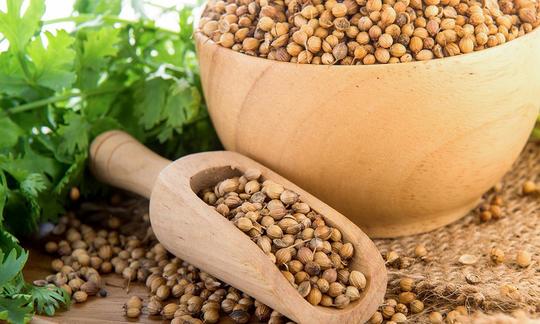

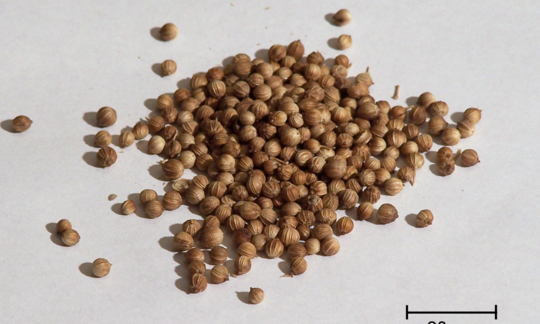

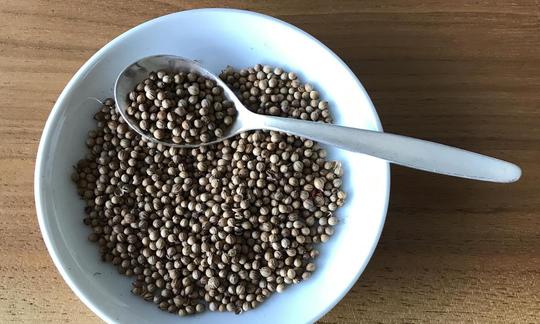

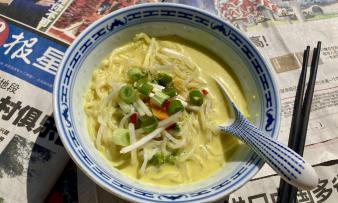

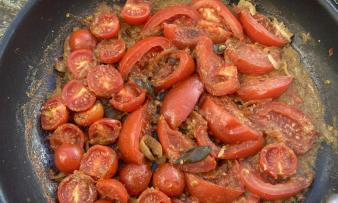





Comments